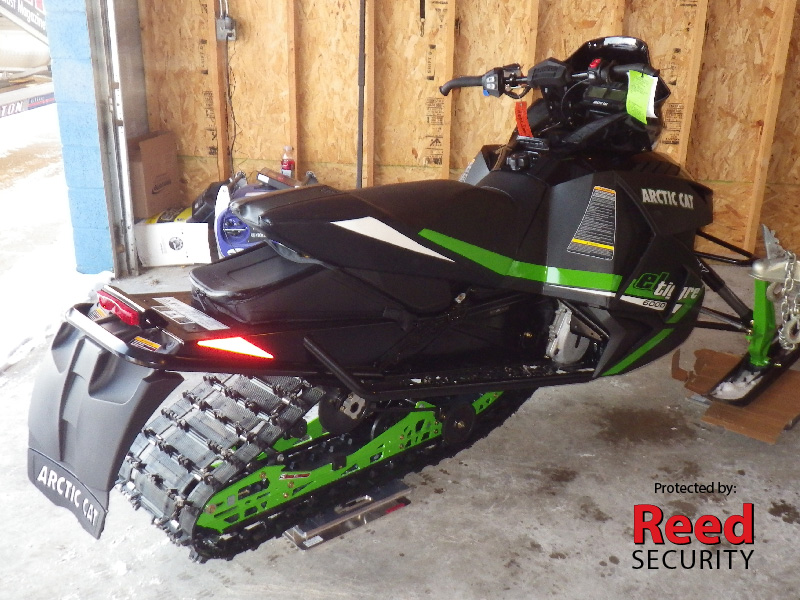
Source: saskatoonpolice.ca
The Saskatoon Police Service would like to advise citizens of a recent rash of Break & Enters to residential garages. Since October, there have been more than 40 occurrences reported where the perpetrator(s) had gained entry to garages with wooden overhead doors by removing one of the panels. Many times tools and machinery including large items like a snowmobile and snow blowers were taken, and in some cases nothing was taken.
Citizens are encouraged to report any cases as such, regardless of items being taken or not, and to keep a vigilant eye in their neighbourhood for suspicious activity or vehicles in alleyways or driveways that have garages with wooden overhead doors.
Added security such as motion lights and recorded video cameras can be beneficial to these investigations and should be referenced when reporting.
USE THIS CHECKLIST FOR BETTER GARAGE SECURITY
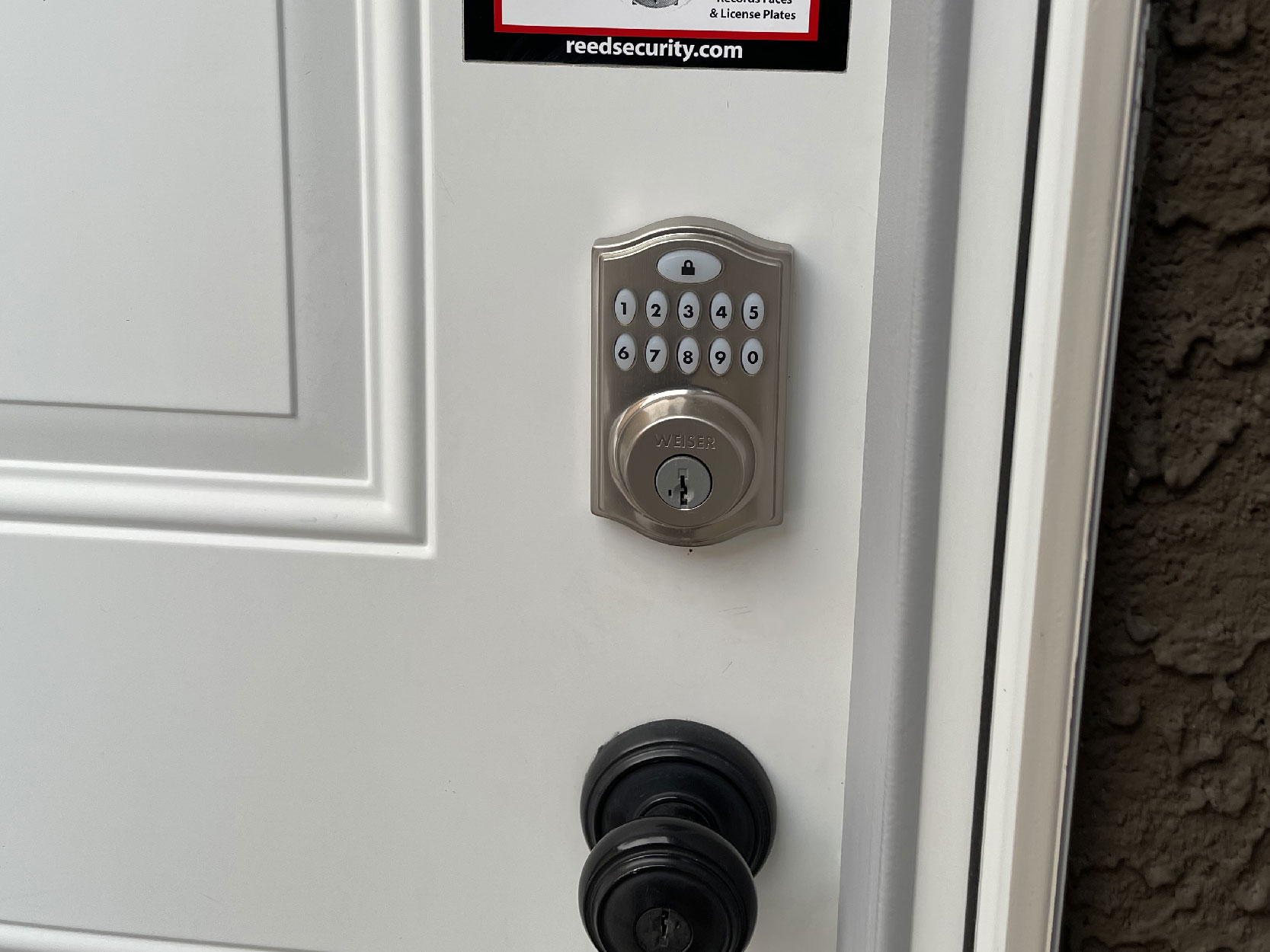
☐ Make sure everything is locked
The easiest way for an intruder to break in is without forced entry; you left a door or window unlocked. Make it part of your routine to ensure all access points are secure when you are done using your garage. The same applies for access points with your home and vehicles.
☐ Add motion lighting
A motion light has two components - a motion sensor and a light. When the motion sensor PIR detects a change in heat the light turns on an illuminates the area. Intruders do not like lighting because it's easier to identify them. Motion lights can be purchased from your local hardware store. We recommend a models with LED lighting. Solar-powered models are very easy to install on your own without contracting an electrician.
☐ Add Door and Window Sensors
A door or window sensor is connected to a security system and lets you know when a door or window is opened. An armed sensor triggers a siren and notifies our 24/7 Monitoring Stations to dispatch the Police.
Note: Most wireless sensors require a heated garage, 0 degrees Celsius or warmer to function properly. Cold temperature sensors are available.
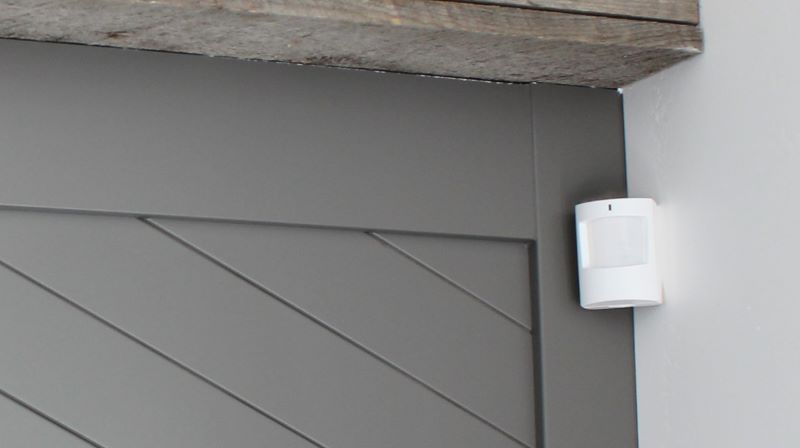
☐ Add a Motion Sensor
A motion sensor is connected to a security system and lets you know when there is movement in front of the sensor. An armed sensor triggers a siren and notifies our 24/7 Monitoring Stations to dispatch the Police. This sensor would detect when an intruder removes a wooden door panel from an overhead door and enters the garage.
Note: Most wireless sensors require a heated garage, 0 degrees Celsius or warmer to function properly. Cold temperature sensors are available.
☐ Add Window Bars or Security Shutters
Sometimes adding security sensors isn't enough. In this case you should add a physical barrier to deter and prevent entry. Metal window bars can be purchased from your local hardware store. Roll up security shutters can be purchased online.
☐ Add a Siren with Flashing Strobe Light
A exterior siren with flashing strobe light is connected to a security system. When triggered by a door, window or motion sensor it creates 110db of unwanted ATTENTION. Intruders often leave the property.
☐ Partition the House and Garage
Modern home security systems have a programming feature called "partitioning". This allows areas to be armed/disarmed independently from each other. Partition 1 can be the Home and Partition 2 can be the Garage. When you are not using your garage make sure it is armed.
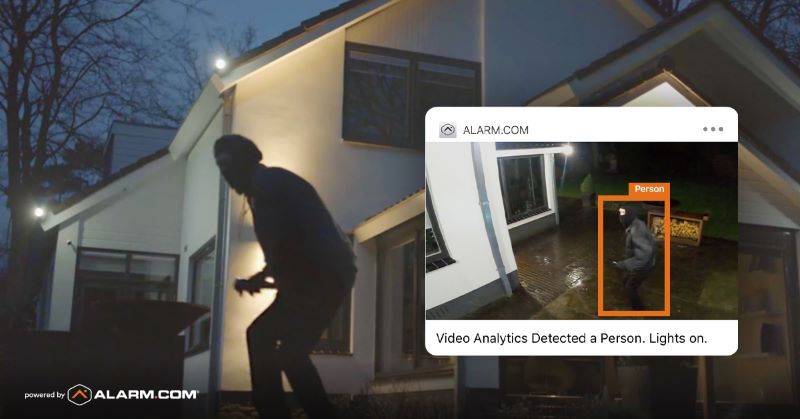
☐ Add Security Cameras
A security camera allows you to keep an eye on things and acts as both a deterrent and recovery tool. All evidence is recorded either to a cloud or local NVR (network video recorder) and is used in Police investigations.
REEDHD™ ColorVu security cameras use ultra low light sensors and a spotlight to see in full color at night.
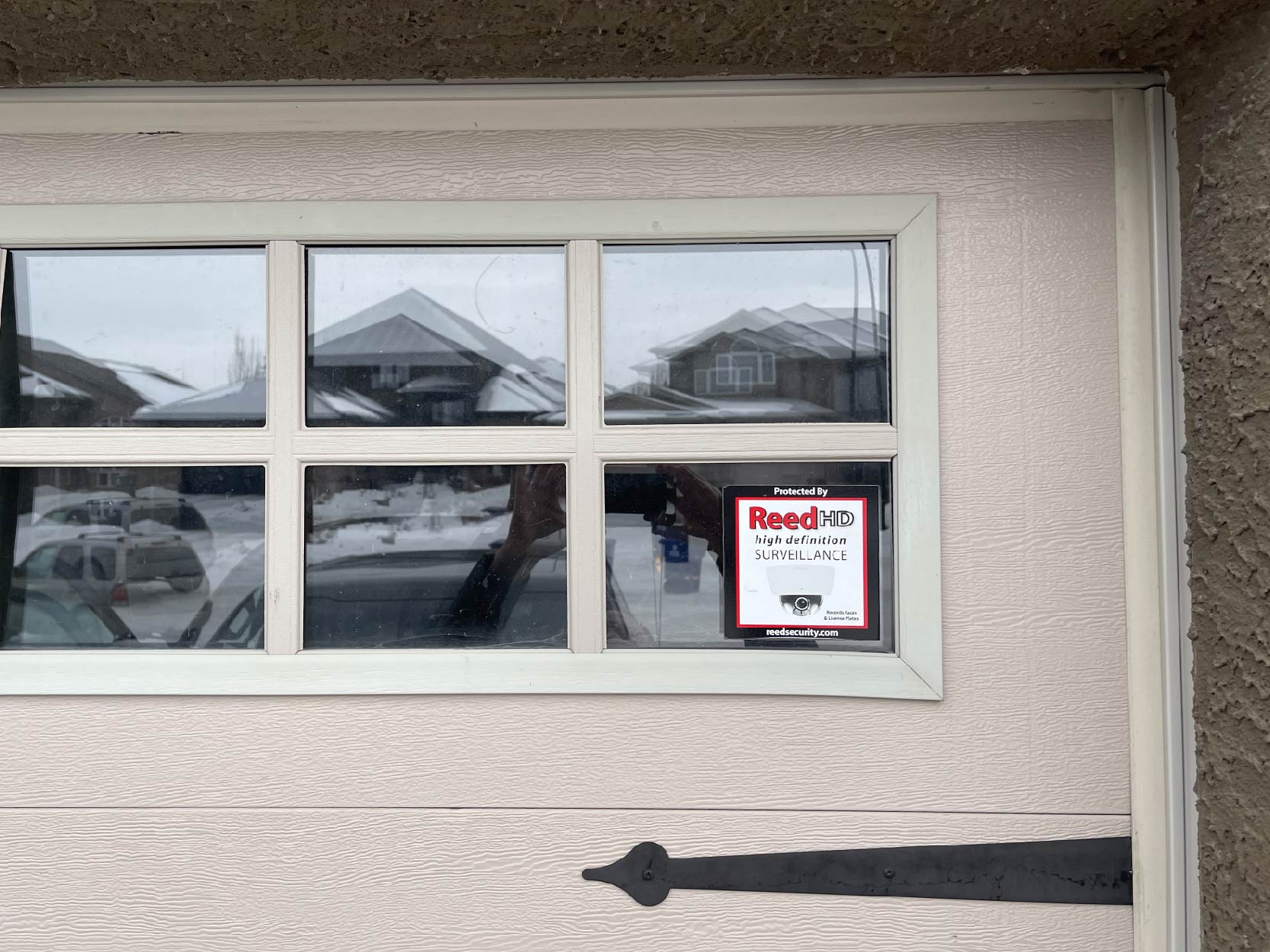
☐ Add Warning Signage
We provide "Protected by Reed Security" warning signs and decals to our clients. When you have a monitored security system you are 400% less likely to experience a break in. Make sure intruders know you are protected.
All security devices are eligible for the Saskatchewan Home Renovation Tax Credit.
Contact us today for a No Obligation, 20 minute Smart Home/Business Evaluation or call 1.844.384.7233
SASKATOON SECURITY
Reed Security Headquarters
306.653.3200 or 1.844.384.SAFE (7233)
SuRe InnoVations
306.974.0888
PRINCE ALBERT SECURITY
306.922.7200
REGINA SECURITY
306.206.0700
CALGARY SECURITY
587.393.2800
EDMONTON SECURITY
855.424.2324
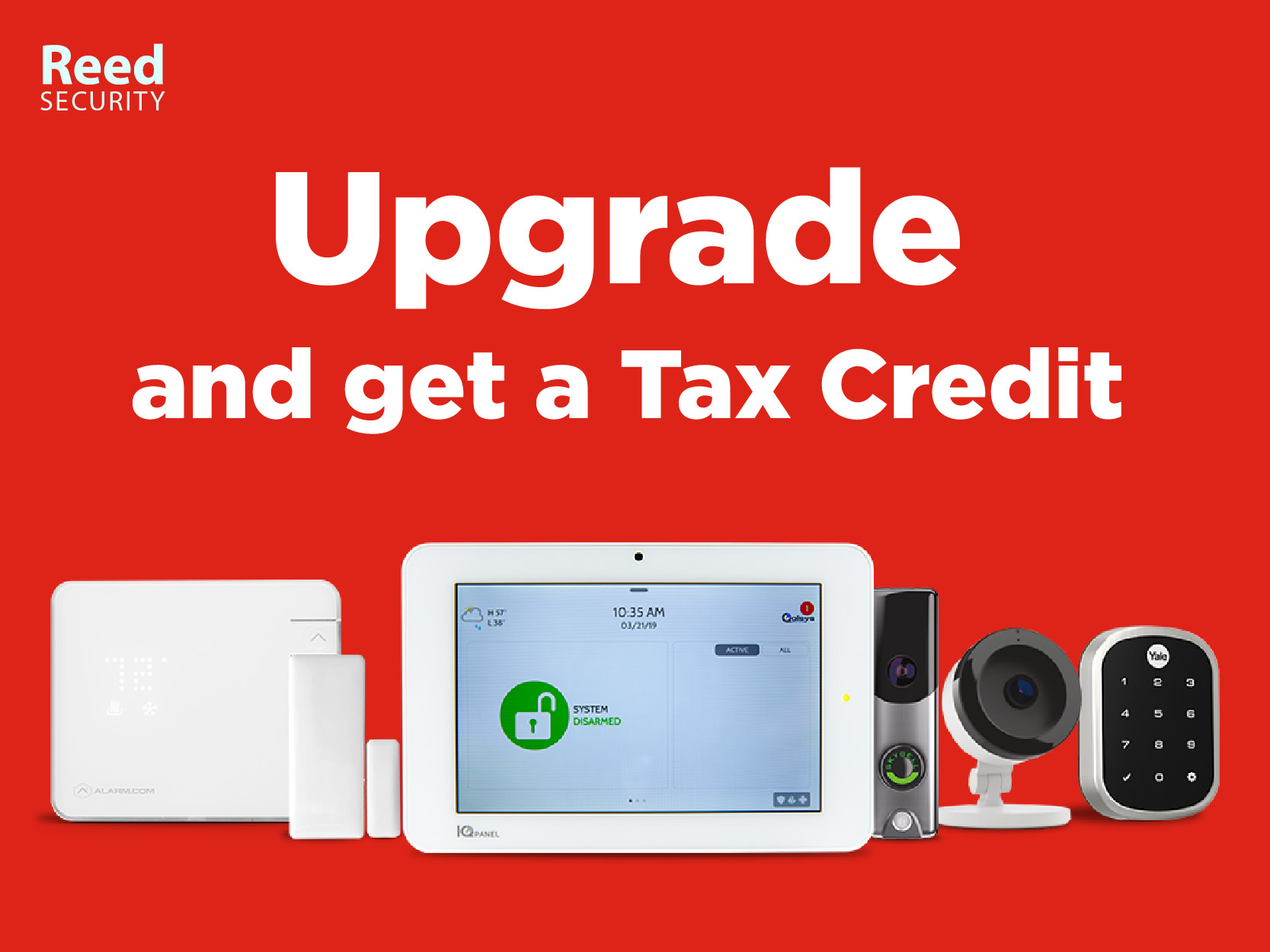
Source: Saskatchewan.ca
Home Renovation Tax Credit
Home Security Systems, Devices and Professional Installation qualify. Monthly fees do not.
Under this non-refundable tax credit, Saskatchewan homeowners may save up to $2,100 in provincial income tax by claiming a 10.5 per cent tax credit on up to $20,000 of eligible home renovation expenses. Eligible expenses include the cost of labour and professional services, building materials, fixtures, equipment rentals, and permits.
This tax credit will be administered by the Canada Revenue Agency (CRA) as part of the Saskatchewan personal income tax system. CRA will develop the necessary forms and filing instructions in the coming months.
1. To Qualify
- Renovations must be to your principal residence, which must be located in Saskatchewan.
- Renovation expenses must be incurred between October 1, 2020, and December 31, 2022.
- The renovation must be substantially completed by December 31, 2022.
- At the time of the renovation(s), you must own, alone or jointly with another person, the housing unit (or share of the capital stock of a co-operative housing corporation that you acquired solely for the right to inhabit the housing unit owned by that corporation).
- You, your current or former spouse or common-law partner, or any of your or your spouse/common-law partner's children must ordinarily inhabit the housing unit during the eligibility period.
- In general, renovations must be of an enduring nature and integral to the dwelling or to the land that forms part of the dwelling. Land of one-half hectare or 1.24 acres, including the land upon which your housing unit stands and any portion of the adjoining land, will generally be considered part of your eligible dwelling for purposes of this tax credit.
2. Claim Credit on Tax Returns
Claim the credit on your 2021 and/or 2022 personal income tax returns:
- Total qualified expenses incurred between October 1, 2020, and December 31, 2021, in excess of $1,000 (base amount), but not more than $12,000 can be claimed on your 2021 tax return (maximum claim of $11,000 for 2021).
- Total qualified expenses incurred between January 1, 2022, and December 31, 2022, in excess of $1,000 (base amount), but not more than $10,000, can be claimed on your 2022 tax return (maximum claim of $9,000 for 2022).
- The tax credit can be split among eligible family members, but the total amount claimed cannot exceed the maximum allowable. Eligible family members include you and your spouse or common-law partner and you or your spouse/common-law partner's children who are under 18 years of age at the end of 2021.
- If you sell and purchase an eligible dwelling during the eligibility period, qualified expenses that you incur for both dwellings will be eligible (however, each dwelling must have been your permanent residence at the time the renovations occurred). The maximum total of qualified expenditures that you can claim is $20,000.
- If you earn rental or business income from part of your eligible dwelling, you can only claim the amount for expenses incurred for the personal-use areas of your dwelling. For expenses incurred for common areas or that benefit the housing unit as a whole (e.g., re-shingling a roof), divide the expense between personal use and income-earning use and claim the personal-use portion.
- Example of splitting the tax credit between family members: You and your spouse enter a contract for the purchase and installation of a new furnace after October 1, 2020, and pay $9,500 for this renovation. On your 2021 tax return, calculate the tax credit as follows: Total qualified expense of $9,500, less the $1,000 base amount = $8,500. Either you or your spouse can claim the entire $8,500 or you can each claim a portion of it. For example, if you claim $3,500, your spouse can claim the remaining $5,000.
3. Documentation
Eligible expenses must be supported by documents such as receipts or invoices and should clearly identify:
- the vendor/contractor including business address and (if applicable) their GST/HST registration number
- the type and quantity of goods purchased and/or services provided
- the dates when the goods and/or services were purchased or delivered
- Invoices must by marked "paid" or be accompanied by other proof of payment such as credit card slips or cancelled cheques.
4. Eligible Expenses
Examples of eligible expenses:
- painting the interior or exterior of a house
- re-shingling a roof
- kitchen, bathroom, and/or basement renovations
- flooring (carpet, linoleum, hardwood, laminate, etc.)
- windows and/or doors
- furnace, boiler, woodstove, fireplace, water softener, water heater, and/or oil tank
- central air conditioner
- permanent home ventilation
- permanent reverse osmosis system
- septic system and/or wells
- electrical wiring upgrades (e.g., changing from 100 to 200 amps)
- home security system (monthly fees do not qualify)
- solar panels and panel trackers
- building a garage, deck, fence, garden/storage shed, and/or an addition to your home
- building a new driveway and/or retaining wall (or resurfacing a driveway)
- exterior shutters and awnings
- pool liners and/or solar heaters and heat pumps for pools (does not include solar blankets)
- landscaping (e.g., sod, perennial shrubs and flowers, trees, large rocks, permanent garden lighting, permanent water fountain, permanent ponds, large permanent garden ornaments)
- fixtures (e.g., blinds, shades, shutters, lights, ceiling fans)
- electronic devices that are installed as a fixture and are necessary and primarily used to operate another eligible expenditure (e.g., a device that is a fixture and is necessary and primarily used to operate solar panels, air conditioning systems, home security devices, or ventilation systems)
- associated costs to the above such as installation, permits, professional services, equipment rentals, and incidental expenses (e.g., work performed by electricians, plumbers, carpenters, architects, etc. will generally constitute an eligible expense)
- for condo owners and co-operative housing corporation members, your share of the cost of eligible renovations to common areas will qualify for the tax credit if certain conditions are met (see Information Bulletin for more details)
5. Ineligible Expenses
Examples of expenses which are not eligible:
- renovations to a cottage or cabin unless it is your principal residence
- the value of your own labour for do-it-yourself projects
- payments to a close relative or other person not at arm's length, unless that person is registered for GST purposes
- routine repairs and maintenance typically performed on an annual or more frequent basis
- maintenance contracts (e.g., furnace and/or pool cleaning, snow removal, lawn care, etc.)
- appliances, furniture, draperies, hot tubs, and mechanical items not considered an enduring addition to your home (e.g. fridges, stoves, couches, etc.)
- TVs, computers, tablets, smart devices, speakers, streaming devices, cellphones, gaming systems, and other audiovisual electronics
- items that have a value independent of the renovation, such as construction equipment and/or tools
- any financing costs (e.g., interest payments) associated with the renovation(s)
Contact us today for a No Obligation, 20 minute Smart Home/Business Evaluation or call 1.844.384.7233
SASKATOON SECURITY
Reed Security Headquarters
306.653.3200 or 1.844.384.SAFE (7233)
SuRe InnoVations
306.974.0888
PRINCE ALBERT SECURITY
306.922.7200
REGINA SECURITY
306.206.0700
CALGARY SECURITY
587.393.2800
EDMONTON SECURITY
855.424.2324